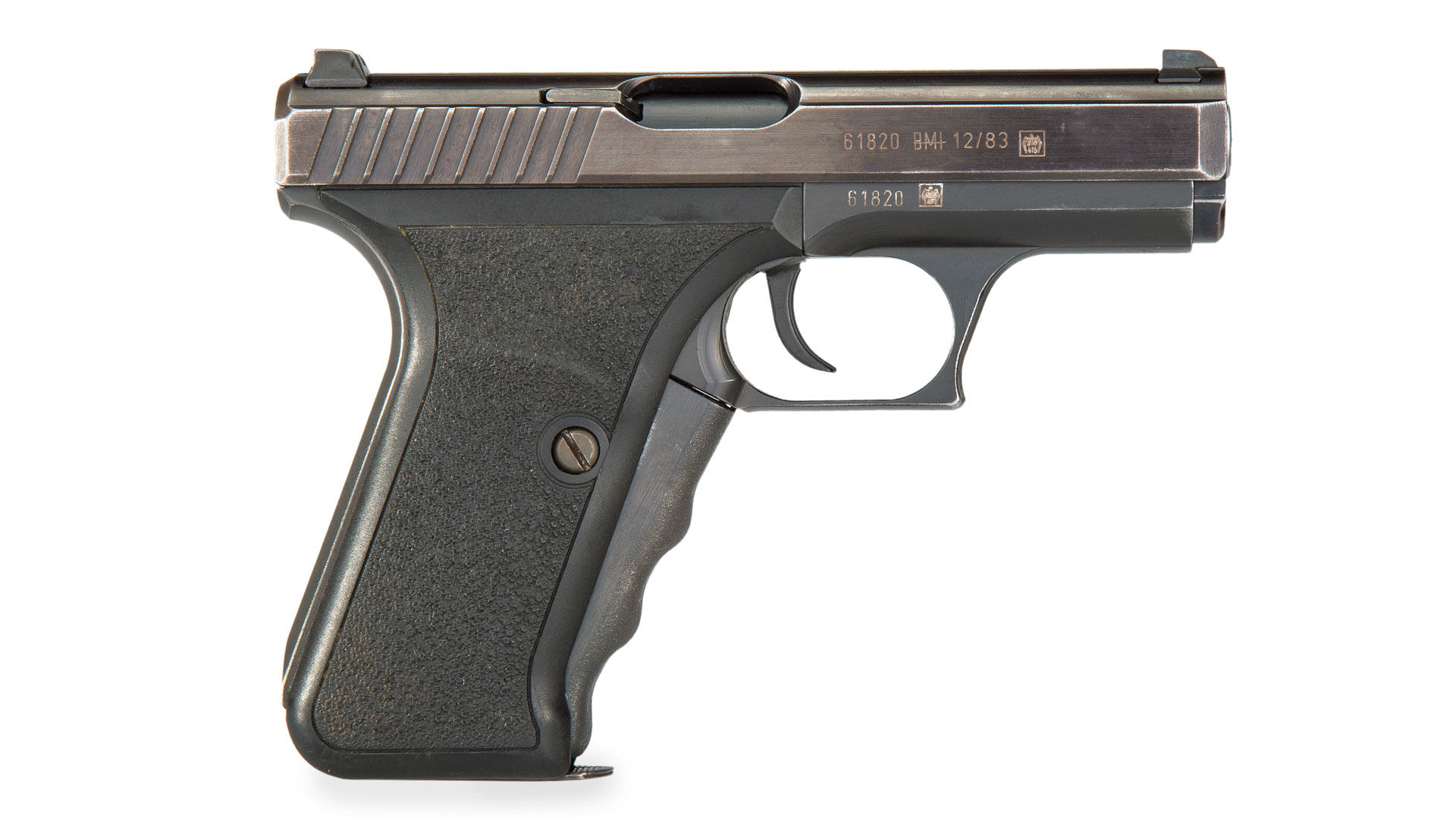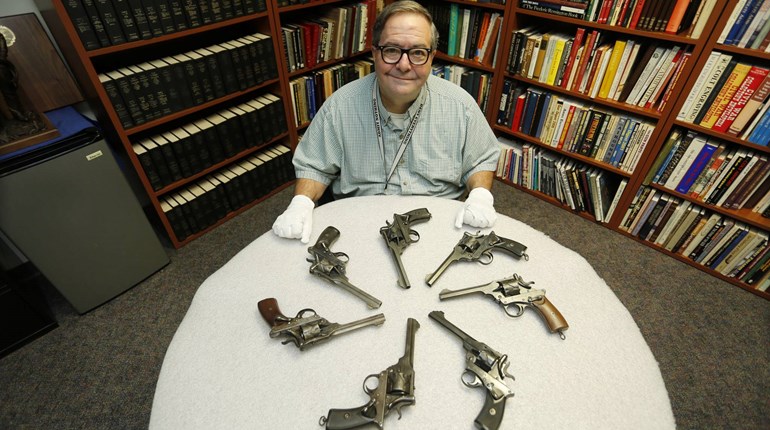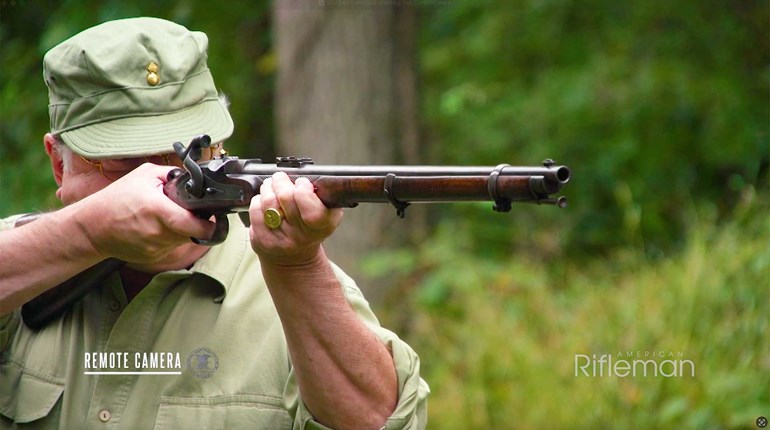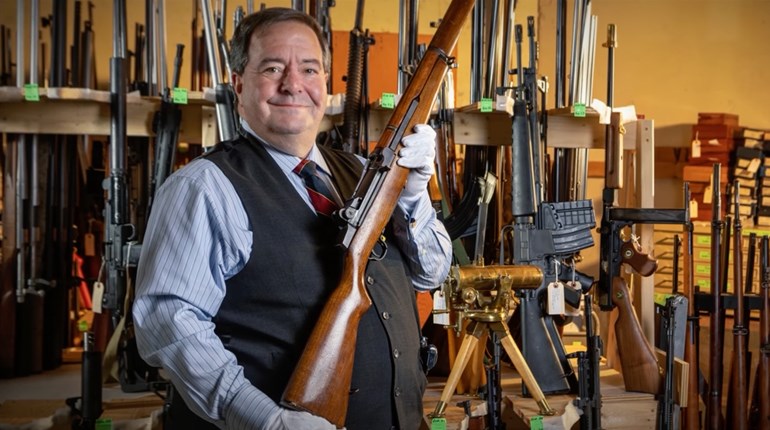
The author’s P7, shown here, bears the markings as property of the Bundesministerium des Innern, or “Federal Ministry of the Interior” (BMI) and the date of manufacture, 12/83.
During a recent browsing of some online gun auction sites, I was pleasantly surprised to find out that a $500 pistol I had purchased some years ago, a Heckler & Koch (H&K) P7, was now bringing prices that ranged from $2,500 to $6,000. That’s not bad for a pistol in which I really had little interest, but I was impressed by how much excitement it generated in the eyes of my brother, Glenn. His interest in the various firearm eras overlaps mine, and the post-World War II gun world is his strong suit, but not really one that had previously held much interest for me. I purchased the pistol from a fellow colleague, not so much as an investment, but to impress my brother. It would be the first of many H&Ks I purchased as I started to develop an interest in these awesome German pistols.
As we briefly covered in a previous installment on the H&K Model 4, the venerable manufacturing firm of Heckler & Koch was actually formed by three former Mauser employees, Edmund Heckler, Theodor Koch and Alexius Wilhelm Seidel. In 1935, while working at Mauser, Seidel was the primary designer of the Mauser HSc, the lines of which are easily seen in his 1964 creation, the H&K M4. In 1970, H&K introduced the revolutionary VP70 or Volkspistole. It was the pistol design Seidel had been working on when French troops entered the Mauser factory in Oberndorf at the end of World War II. It was the first polymer-frame pistol introduced on the market, some 12 years before the Glock G17. The VP70’s design team included H&K engineers Tilo Moller and Helmut Weldle. It used a double-stack 9 mm magazine that held 18 rounds and was carried in a polymer holster that doubled as a shoulder stock, similar to the Mauser C96 “broomhandle” pistol of the late 19th century.
Shortly after the Munich Olympics terrorist attack in 1972, the German Police sent out an RFP for a new pistol design. In 1976 Seidel, Moller and Weldle introduced the H&K PSP, or Polizei-Selbstlade-Pistole (police self-loading pistol). It competed against a number of offerings from Walther, SIG Sauer and Astra, and was the seventh pistol on the trials list, so it was named the P7.

Today, it is most commonly known as the H&K squeeze-cocker pistol, a unique design where the forward side of the grip needs to be depressed to cock the firing pin and allow the pistol to be fired, virtually eliminating the possibility of a non-intentional discharge, as the grip must be held in the firing position to engage the trigger. While “squeeze-cocker” pistols were not a new idea, they had not found a willing platform since the late 1880s. The design is a semi-automatic system best described by the H&K P7 manual: “(The P7 and variants) are recoil-operated pistols. However, upon ignition of the cartridge, a portion of the propellant gas flows through the gas port into the gas cylinder. In the gas cylinder, the propellant gas acts upon the piston which retards the rearward motion of the slide until the bullet has left the barrel. Once the bullet has left the barrel, the decrease in gas pressure on the piston allows the slide to move rearward, ejecting the empty cartridge case. The recoil spring then moves the slide forward chambering the next round.”
The P7 went into production in 1979 and was adopted by the German Federal Police’s counter-terrorism unit (GSG 9), Bavarian Police units and German Military Special Forces. In the 1980s, it competed in the American pistol trials to replace the Colt M1911, where it lost out to the Beretta 92 (M9). For these trials, a version of the P7 A13 (M13) was made with a double-stack magazine and an ambidextrous magazine release located on the grip frame behind the trigger as opposed to the original heel-catch (or European-style) magazine release. The A13 (M13) moniker stood for the increased capacity of 13 rounds, which included an extended magazine well.
Numerous variants in .22 LR, .40 S&W and even a few in .45 ACP were made, and the New Jersey and Utah State Police adopted the P7, as did the U.S. Park Police. Its eventual Achilles heel was the extraordinary cost that priced it far outside the market of its competitors. Production of the P7 and its variants ended in 2008, creating quite the demand for what was once described as “the world’s most expensive pistol,” a moniker that is, while not entirely accurate, easily understood, as those sold at auction still command premium final-gavel prices.




































